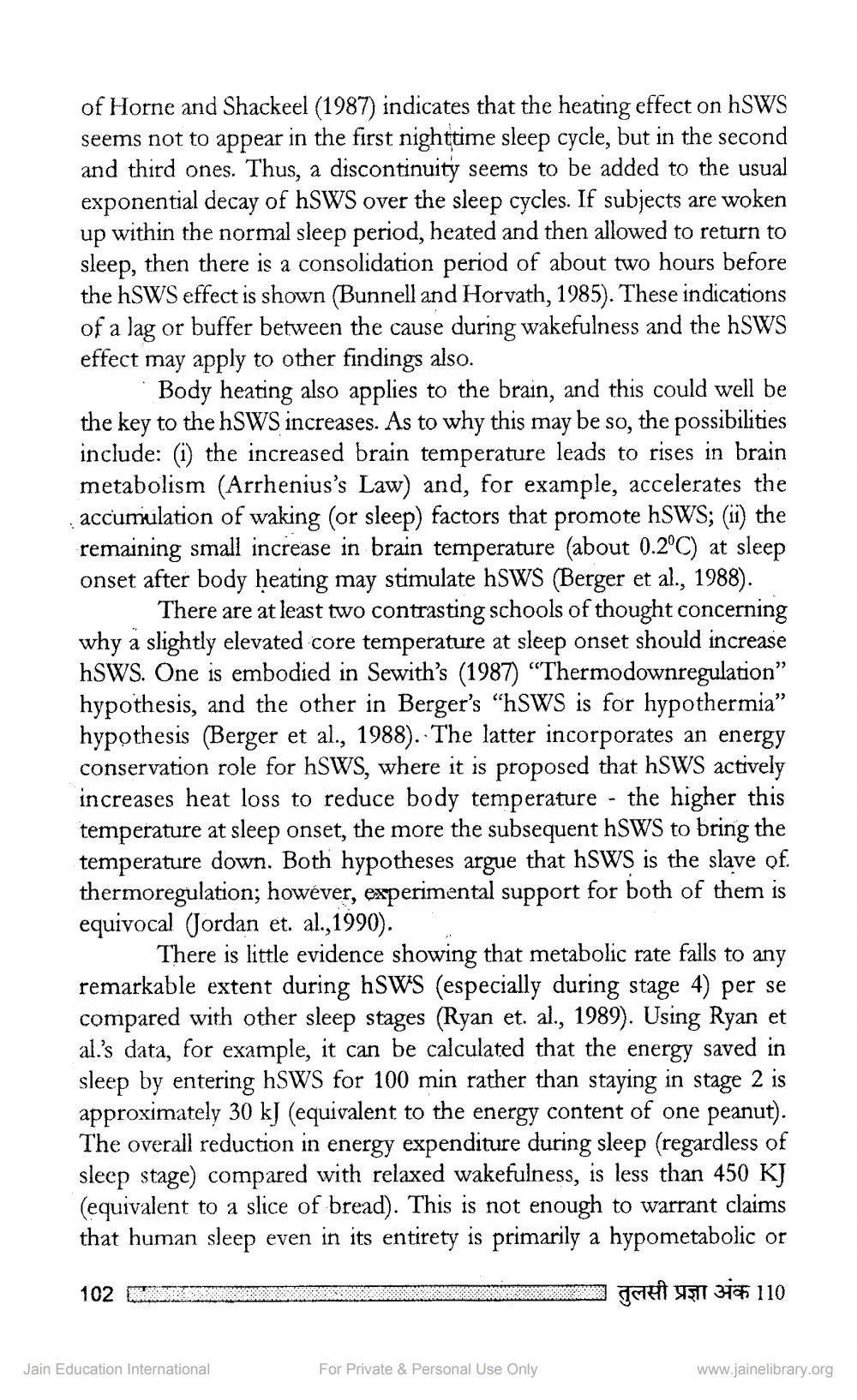________________
of Horne and Shackeel (1987) indicates that the heating effect on hSWS seems not to appear in the first nighttime sleep cycle, but in the second and third ones. Thus, a discontinuity seems to be added to the usual exponential decay of hSWS over the sleep cycles. If subjects are woken up within the normal sleep period, heated and then allowed to return to sleep, then there is a consolidation period of about two hours before the hSWS effect is shown (Bunnell and Horvath, 1985). These indications of a lag or buffer between the cause during wakefulness and the hSWS effect may apply to other findings also.
* Body heating also applies to the brain, and this could well be the key to the hSWS increases. As to why this may be so, the possibilities include: (i) the increased brain temperature leads to rises in brain metabolism (Arrhenius's Law) and, for example, accelerates the accumulation of waking (or sleep) factors that promote hSWS; (ii) the remaining small increase in brain temperature (about 0.2°C) at sleep onset after body heating may stimulate hSWS (Berger et al., 1988).
There are at least two contrasting schools of thought concerning why a slightly elevated core temperature at sleep onset should increase hSWS. One is embodied in Sewith's (1987) “Thermodownregulation" hypothesis, and the other in Berger's "hSWS is for hypothermia” hypothesis (Berger et al., 1988). The latter incorporates an energy conservation role for hSWS, where it is proposed that hSWS actively increases heat loss to reduce body temperature - the higher this temperature at sleep onset, the more the subsequent hSWS to bring the temperature down. Both hypotheses argue that hSWS is the slave of. thermoregulation; however, experimental support for both of them is equivocal (Jordan et. al.,1990).
There is little evidence showing that metabolic rate falls to any remarkable extent during hSWS (especially during stage 4) per se compared with other sleep stages (Ryan et. al., 1989). Using Ryan et al's data, for example, it can be calculated that the energy saved in sleep by entering hSWS for 100 min rather than staying in stage 2 is approximately 30 kJ (equivalent to the energy content of one peanut). The overall reduction in energy expenditure during sleep (regardless of sleep stage) compared with relaxed wakefulness, is less than 450 KJ (equivalent to a slice of bread). This is not enough to warrant claims that human sleep even in its entirety is primarily a hypometabolic or
102 C
Jei uş11 310 110
Jain Education International
For Private & Personal Use Only
www.jainelibrary.org




